In pictures: 75 years since the Blitz
- Published
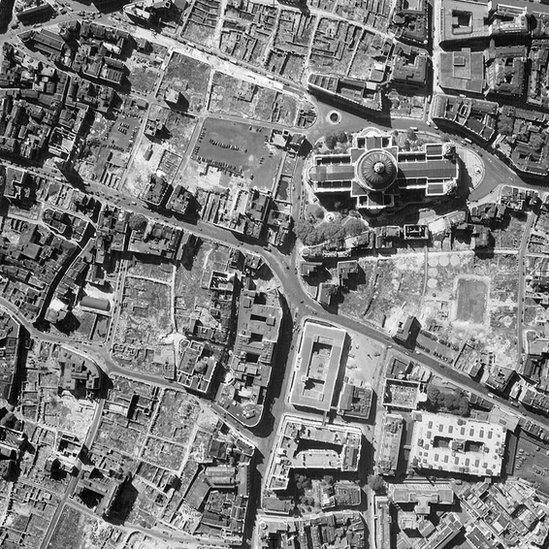
On the afternoon of the 7 September 1940 the first air raids of what became known as the Blitz began. They concentrated on the densely-populated East End, along the river by London's docks, although through the following months the area around St Paul's Cathedral saw heavy bombing, as this picture shows.
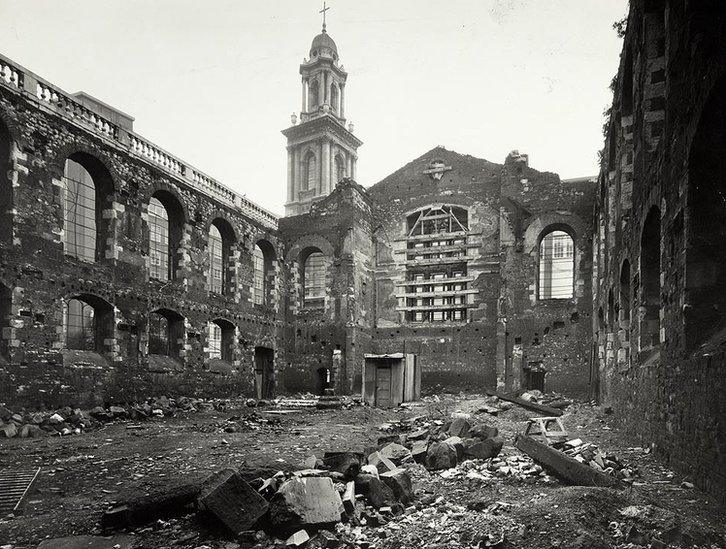
Many other churches were damaged, such as St Andrew's Church which was designed by architect Christopher Wren in the 17th century. It was gutted by bombing on 7 May 1941 and later restored by Seely and Paget - reopening in 1961.
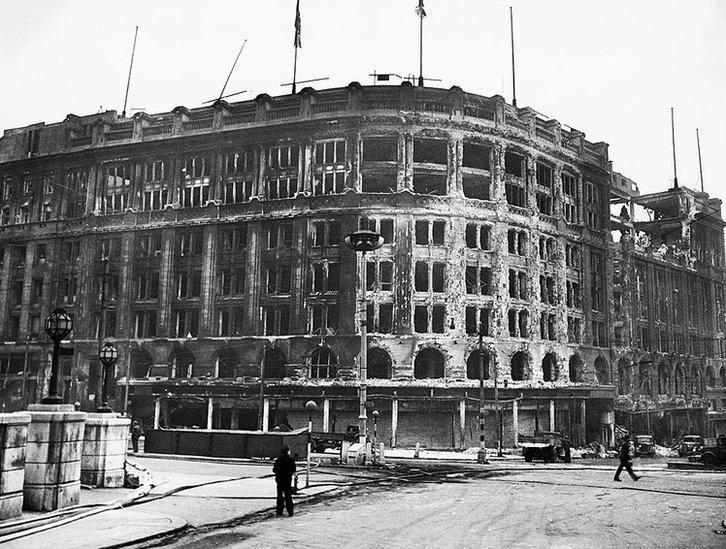
The Blitz used strategic bombing across the country, aimed at destroying civilian morale and industrial production rather than focusing on purely military targets. These pictures are drawn from the archives of Historic England and offer a record of the buildings damaged during the campaign. This one shows the remaining shell of Lewis's Department store in Liverpool and was taken in 1942.
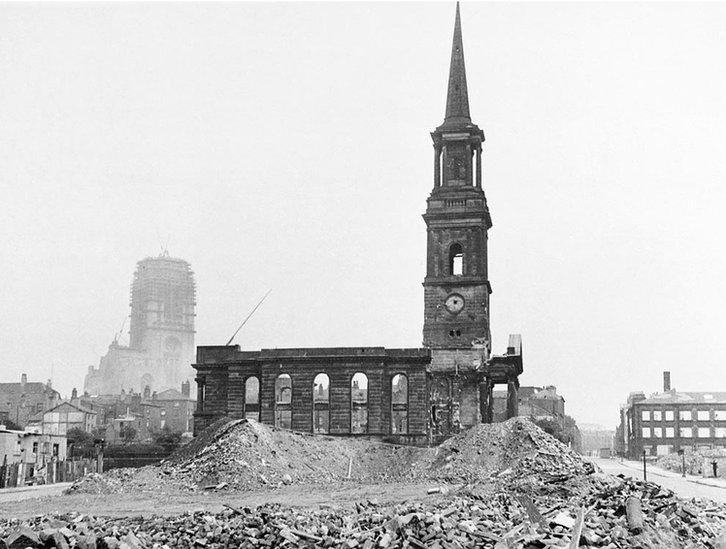
Another picture from Liverpool shows the view from the north-west of St Michael's Church.

The Ring, an octagonal building in Southwark, London, was built in the 1780s as the Surrey Chapel and from 1910 was used as a boxing venue. It was destroyed in a German bombing raid on 25 October 1940.
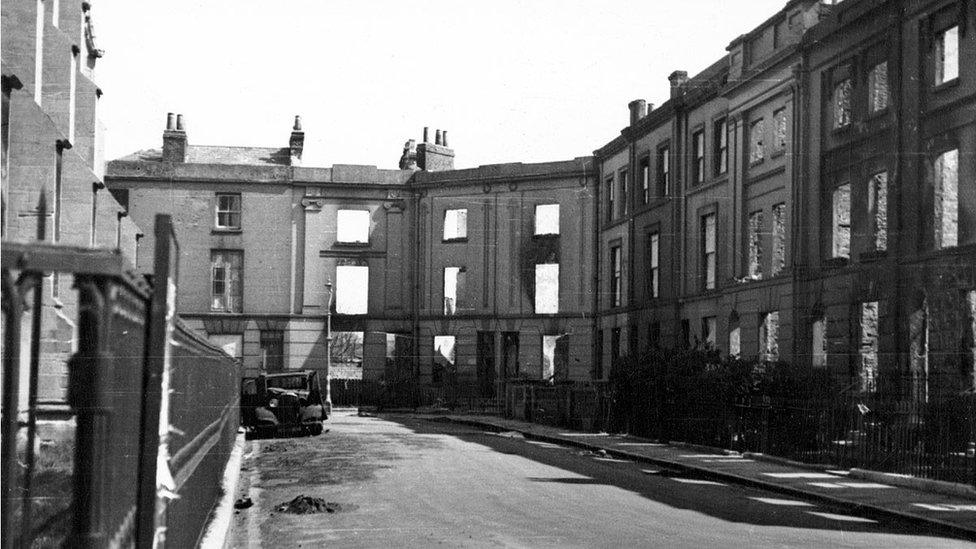
This image of bomb-damaged terraced houses in St Paul's Square, Portsmouth, is thought to have been taken by John Summerson, the then Deputy Director and a founder member of the National Buildings Record.
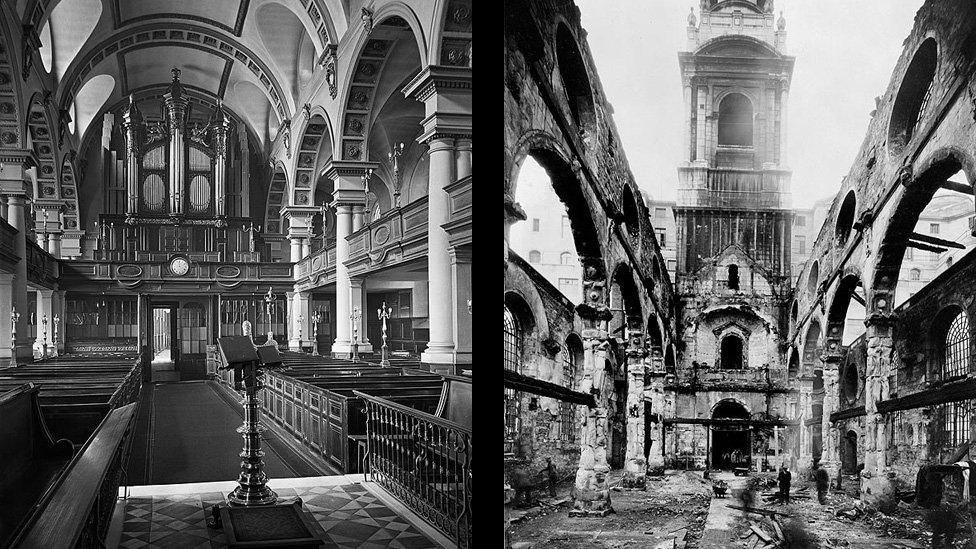
The photograph on the left shows St Bride's Church in London in the 1930s, but firebombs reduced it to rubble on 29 December 1940. The photograph on the right was taken for the National Buildings Record in March 1941.

A single-decker bus passes a hoarding advertising a crazy gang stage show, a popular British comedy ensemble at the time.
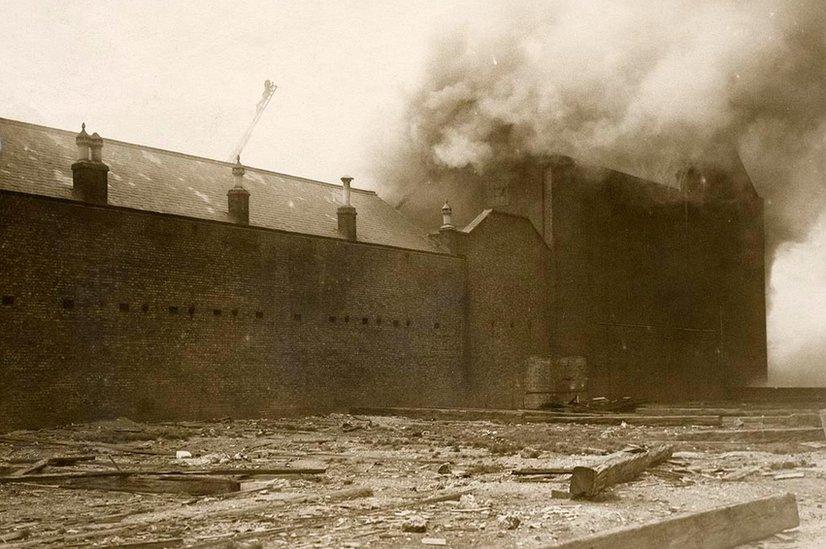
A view of Clowes Printing Works, Duke Street, Lambeth, on fire with smoke billowing from the roof. About 43,000 civilians died during the Blitz. Almost 140,000 more were injured, and more than a million homes damaged or destroyed.